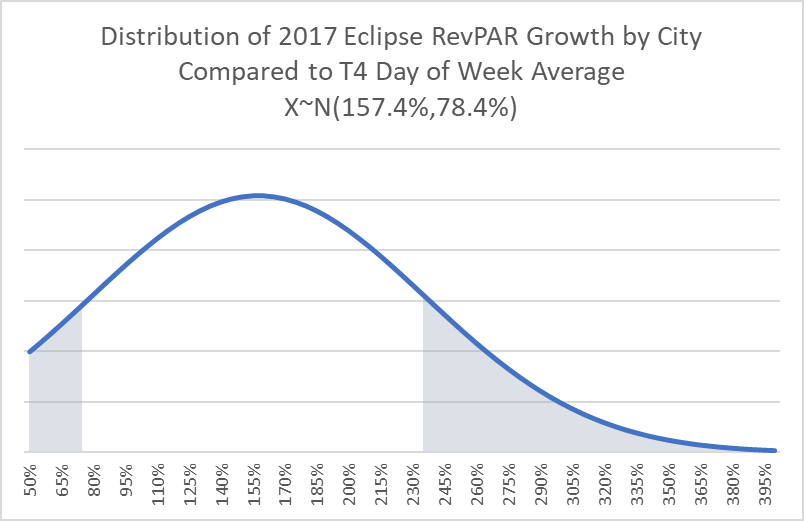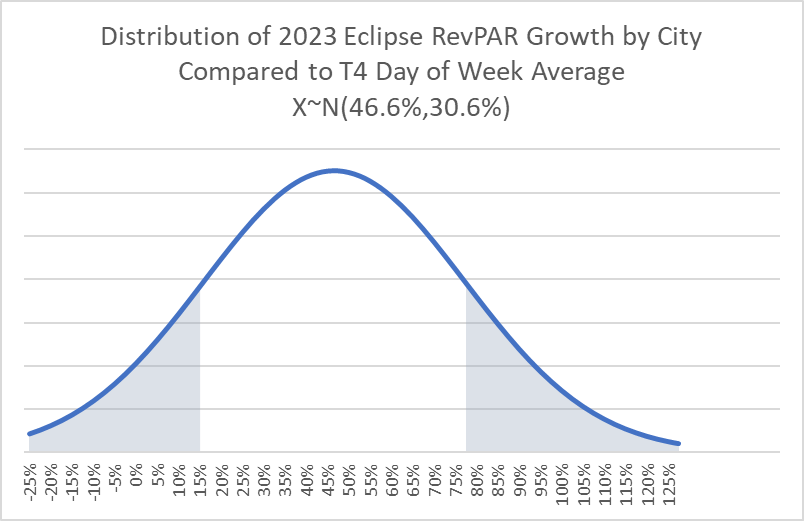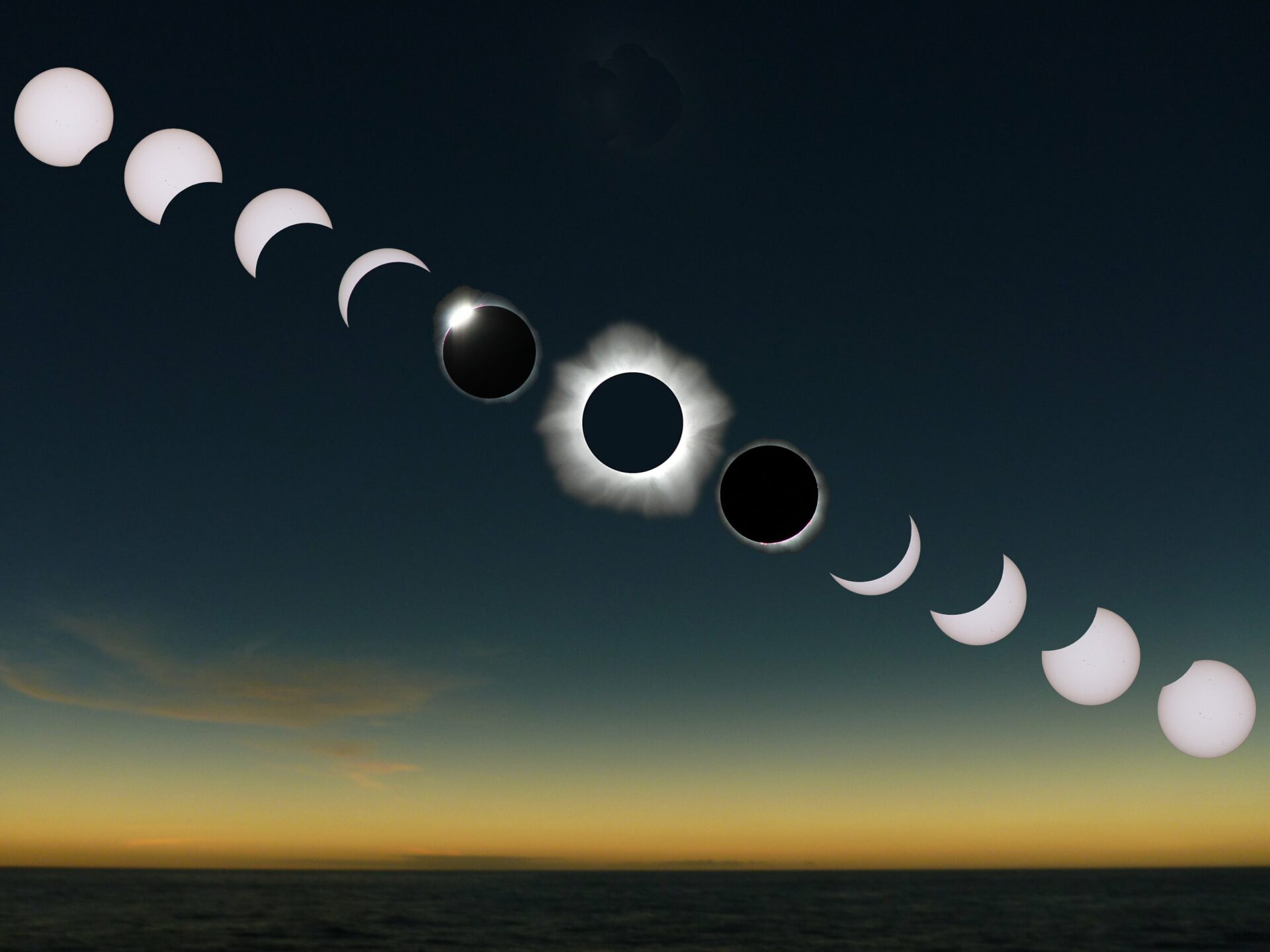On April 8th, the next total solar eclipse will occur, with a significant number of U.S. cities in the path of totality. This is the first total solar eclipse visible in the U.S. since 2017. Outside of knowing not to stare directly at a solar eclipse (you know that right?), the other thing most hoteliers know is that eclipses often have a big impact on local market performance. In the run-up to the eclipse, here are some interesting hotel facts you might be interested in:
Prior Eclipses have increased RevPAR by 50-100% for many markets in the path of totality
Drawing from a list of cities in the path of totality during the 2017 total eclipse and the 2023 annular eclipse, there was strong growth across the reporting properties within markets during the stay date prior to the eclipse as well as on the eclipse day itself. Aggregate RevPAR grew by 114% for those two days compared to the trailing four-week trends and grew by 140.9% YoY compared to the prior year. Both Occupancy and ADR were impacted. Smaller towns and cities had a larger RevPAR % growth, causing the mean impact by city to be as high as 157% compared to the four-week average (see distribution chart below). Occupancy grew from 60-65% in the preceding four weeks and prior year to 93% during the eclipse days. ADR grew by 50% compared to the trailing four weeks and the same period in 2016.

The 2023 annular eclipse had a smaller, but still notable impact for the day prior and the day of the eclipse, growing Aggregate RevPAR by 48% compared to the trailing four-week period and by 42.6% compared to the prior year. The mean growth by city was similar to the aggregate growth, growing by 46.6% (see distribution chart below). Again, as in 2017, both Occupancy and ADR contributed equally to this growth.

Business peaks the night before the eclipse
In both the 2017 and 2023 eclipse, although both days grew compared to historical periods, the night before the eclipse grew significantly more. This makes a certain amount of sense, as in many of these markets, the eclipse occurred early in the day, allowing visitors time to head home after the eclipse. The same thing should occur during the 2024 Total Eclipse, which will appear in the early afternoon in Texas markets and pass Maine markets by the late afternoon.
During the 2017 eclipse, occupancy the night before the eclipse increased from 55% in the prior year and trailing four-week average to 95%. ADR grew by 61% compared to the trailing average and by 86% year over year. The night following the eclipse, occupancy increased from 72% the prior year and 73% in the trailing four weeks to 92%, and ADR grew by 39% to the trailing four-week average and 45% year over year.
The 2024 will be similar and different to the 2017 eclipse
The 2017 eclipse occurred on a Monday, the same day of the week as the upcoming April eclipse. As a result, the day of the week patterns is similar. The day prior to the eclipse will still be Sunday, with many of the same impacts on the decisions of leisure travelers. Unlike 2017, there will be a significantly larger number of cities impacted by the eclipse.
In 2017, just over 6.5 million people lived in the path of the total eclipse. In 2024, over 31.5 million people will live in the path of the eclipse, with multiple major metro areas in the path of totality. As a result of this path, there is significantly higher hotel supply in the path of totality, meaning guests have many more hotel options when traveling to see the eclipse. This could potentially mean lower gains relative to the four-week and YoY production for the same day of the week. Of special note – Carbondale, IL, will be one of the few towns in the U.S. to have been both in the path of the 2017 and 2023 eclipses!
Current Outlook for the 2024 Eclipse
There is no doubt that the upcoming 2024 eclipse will have a notably positive impact on markets in the path of totality. Based on historic performance, there is likely to be strong growth in those markets. However, there are some headwinds that should limit expectations somewhat. Because there is significantly more hotel supply in the path of the 2024 eclipse than in either the 2017 total eclipse or the 2023 annular eclipse, it is likely that growth will be somewhat more moderate than in the prior two eclipses. It’s also worth noting that the prior total eclipse occurred six years ago, compared to 2017 when the prior total eclipse viewable in the mainland U.S. was in 1979.
Current pace data from cities[1] within the path of the solar eclipse shows significant room night pickup relative to both the four-week average for the upcoming Monday and the YoY. Median on the books pace is more than 20% higher for hotels within the path of totality than it was for the same lead time in their trailing four-week average.
[1] Cities Included – Uvalde, Kerrville, Austin, Kileen, Fort Worth, Dallas, Little Rock, Jonesboro, Poplar Bluff, Cape Girardeau, Carbondale, Mount Vernon, Evansville, Terre Haute, Indianapolis, Dayton, Wapakoneta, Toledo, Cleveland, Erie, Buffalo, Rochester, Syracuse, Burlington, Presque Isle
To learn how Kalibri Labs’ data analytics and innovative approach to profitability could help your hotel, schedule a demo today!







